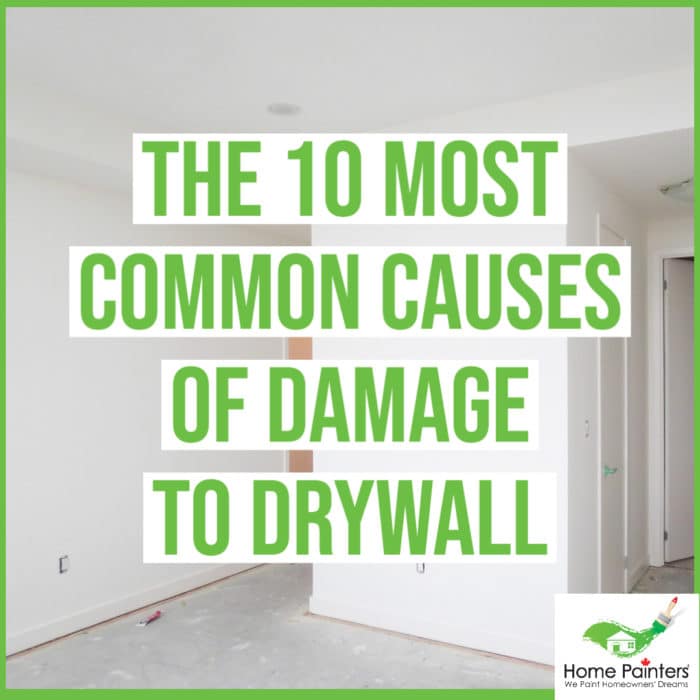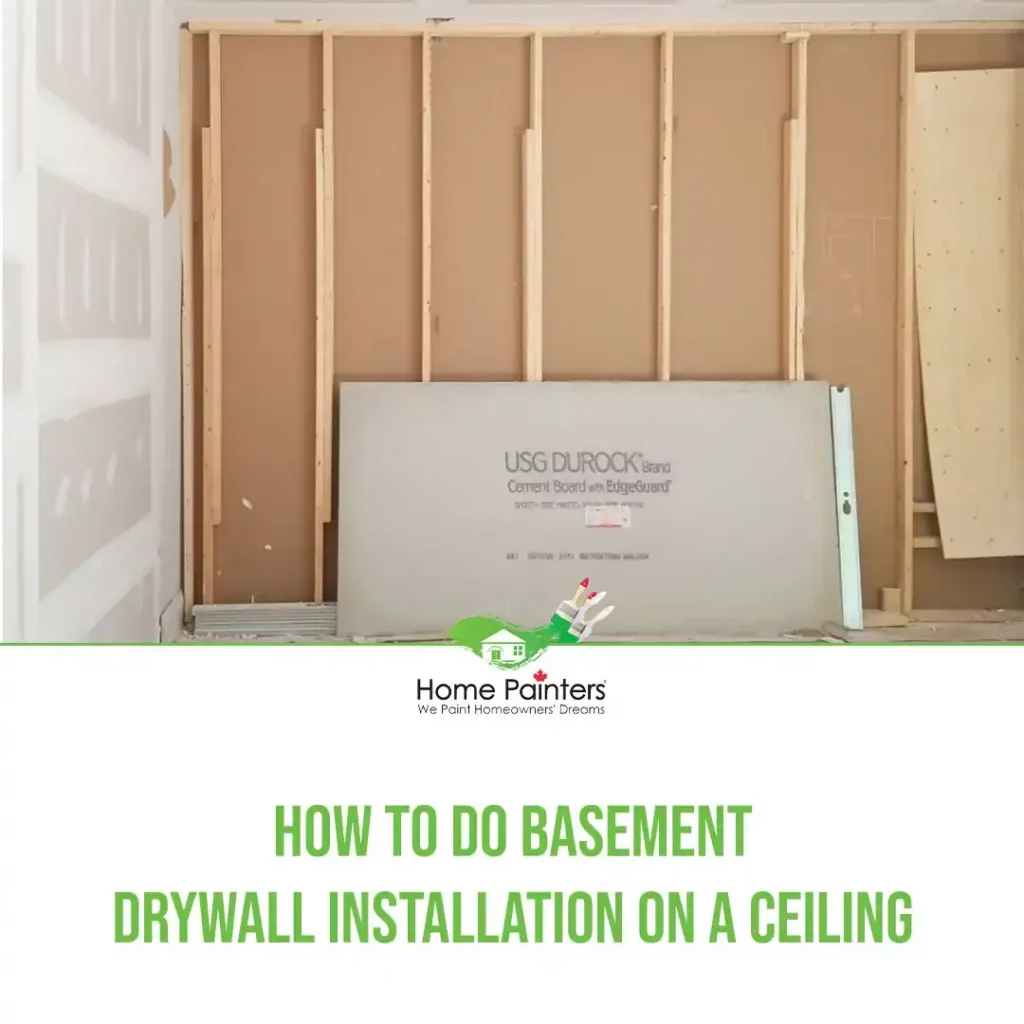
Drywall is a common material used for walls and ceilings in homes and buildings. However, it is susceptible to damage, whether from accidents, moisture, or normal wear and tear. In this blog post, we’ll explore some important things to know about fixing damaged drywall to help you tackle repairs effectively.
Important Things to Know About Fixing Damaged Drywall
One thing that every homeowner knows is the stress and hassle of maintaining a home and regular upkeep. While it’s true that finally having a house to call your own is one of life’s greatest achievements, it’s also a big responsibility. If there’s one thing you need to keep a special eye on, is the drywall. You don’t want to leave cracked or broken drywall alone, as it can cause problems later on.
You have the freedom to repair things yourself or contact a professional. Although the process is doable on your own, it’s essential to know a few basic things to ensure you understand what you’re getting into. Of course, if it gets too much, you can always call in the professionals. But it would be better to have it figured out before you have to tap out.
Here are some essential things to know before you set out to fix the drywall in your home.
What Causes Damaged Drywall?
As you might know, drywall is a thin, hardboard made of plaster and gypsum. It covers the walls, ceilings, and floors of many homes, offices, and shops and is an incredibly common material used for construction. However, neglecting it can lead to problems.
A drywall is particularly vulnerable to damage caused by moisture, especially when exposed to it for long periods. Things like structural damage, fire damage, and rot can cause cracks and holes in your drywall. This can lead to mould and other problems.
If you have a wet basement, you’ll have to deal with moisture at some point, and that could lead to broken drywall. If you have water damage but not a wet basement, then a leaky roof or a pipe burst could cause similar problems.
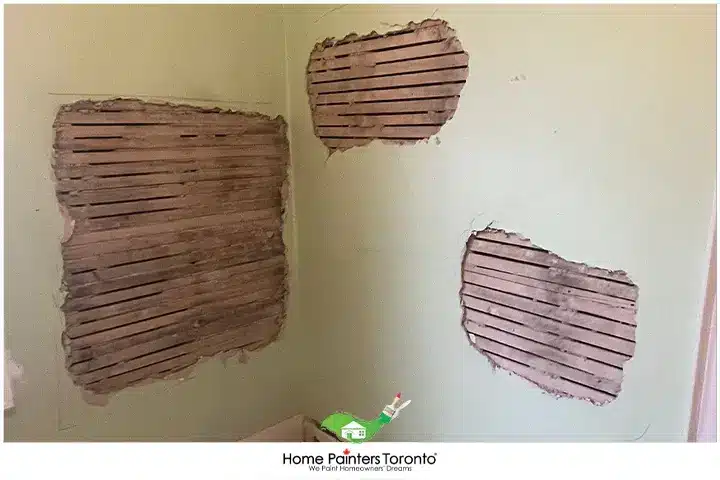
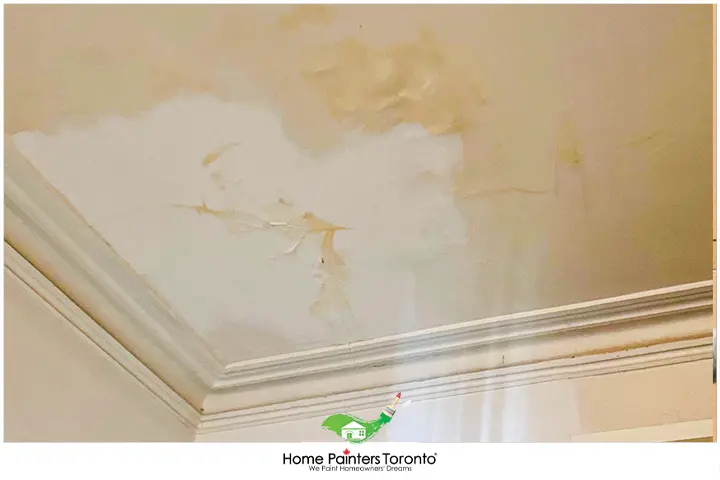
How to Fix Damaged Drywall?
As you can tell from above, getting the water out is a big step in the process, and that means you’ll need to get your hands dirty. First of all, you have to dry out your walls and ceilings. You’ll need to clean it up if you have a wet basement. If you have a leaky roof, you’ll need to fix that. If it’s a leaky pipe, you’ll need to fix that. You get the idea.
Next, you’ll want to repair the damage. Drywall isn’t hard to work with, but it takes practice to do it right. Grout and plaster aren’t too hard, but they can get tricky. But even if you’re not the handiest person in the world, it’s not too hard to learn.
You’ll need a few materials, including a drywall knife, a taping knife, a sponge, and a drywall pointer, like a sharp pencil. All the materials are simple, but it helps if you already know how to use them.
How to Fix Drywall Hole
1. Assess the Damage
Before starting any drywall repairs, it’s crucial to assess the extent of the damage. Minor damage, such as small holes or cracks, can usually be repaired with simple techniques. However, more significant damage, such as large holes or water damage, may require professional assistance or a more extensive repair process.
2. Gather the Right Tools and Materials
Having the right tools and materials is essential for a successful drywall repair. Some basic tools you’ll need include a utility knife, sandpaper, a putty knife, a drywall saw, a joint compound, and drywall tape. Ensure you have all the necessary supplies before starting the repair process.
3. Prepare the Area
Before repairing, prepare the damaged area by removing debris and loose material. Ensure the area is clean and free from dust by sanding the drywall. This will help the repair material adhere properly. Cover adjacent surfaces and furniture to protect them from dust or splatter during the repair process.
4. Repair Small Holes or Cracks
Small holes or cracks in drywall can often be repaired with a simple patching technique using a drywall patch. Use a utility knife to create a clean, even edge on the damaged area. Apply a thin layer of drywall repair putty or joint compound over the damaged area, then press a piece of drywall tape onto the compound. Smooth out the tape and apply another thin layer of joint compound over the tape. Allow it to dry, then sand and repeat the process until smooth.
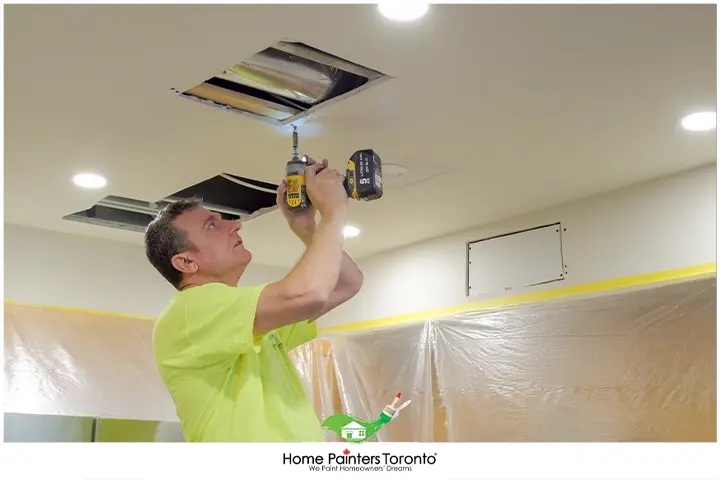
5. Fix Large Holes or Water Damage
Repairing large holes or water-damaged drywall may require a bit more effort. Cut out the damaged area in a square or rectangular shape for large holes. Attach a new drywall to the exposed studs and secure it with drywall screws. Apply joint compound over the seams, feathering it to create a smooth surface. For water damage, it’s crucial to address the underlying issue before repairing the drywall to prevent further damage or mould growth.
6. Prime and Paint
After the repairs are complete, it’s essential to prime and paint the repaired area to blend it in with the surrounding wall or ceiling. Choose a primer and paint for drywall that match the existing colour. Apply primer to the repaired area, and once it’s dry, apply multiple coats of paint until it’s seamlessly blended.
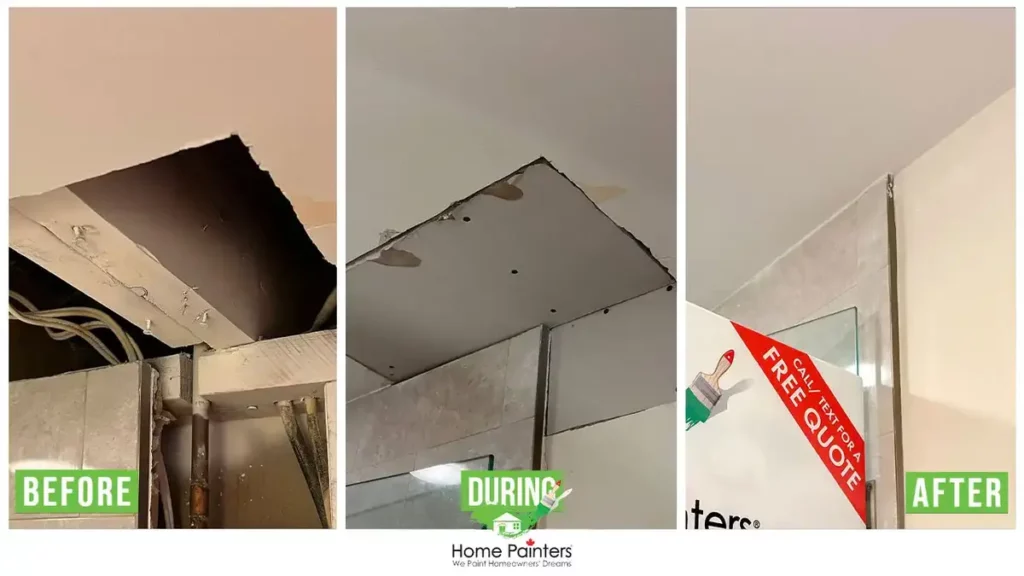
Drywall repair is a task that many homeowners may encounter at some point. By assessing the damage, gathering the right tools and materials, preparing the area, and following the appropriate repair techniques, you can successfully restore your drywall to its original condition. Remember to take the necessary steps to prime and paint the repaired area to achieve a seamless finish. If you’re unsure about the repair process or if the damage is extensive, it’s always advisable to seek professional drywall service to ensure a high-quality and long-lasting repair.
When to Call a Professional?
Okay, so you’re set to fix your drywall. However, depending on the problem, you might find it easier to call a professional to do the job. For example, you might find fixing a large hole in the wall or ceiling challenging. If you’re unsure what you’re doing, you might want to give it to the pros.
Or, maybe you are handy, but the job is too big for you to handle. You might be able to tackle it, but it’s just not worth the time and effort. That’s why it’s best to be prepared and check out how to fix damaged drywall independently.
Fixing broken and damaged drywall is a job you can do if you know what you’re doing. Essential tools and materials are needed, and if you know what you’re doing, you can do it.
If you’re unsure or have a lot of damage, calling in the pros might be a good idea. Either way, you’ll want to be prepared to get your hands dirty and work hard. You’ll be satisfied with helping out your home and knowing what you’ve done.
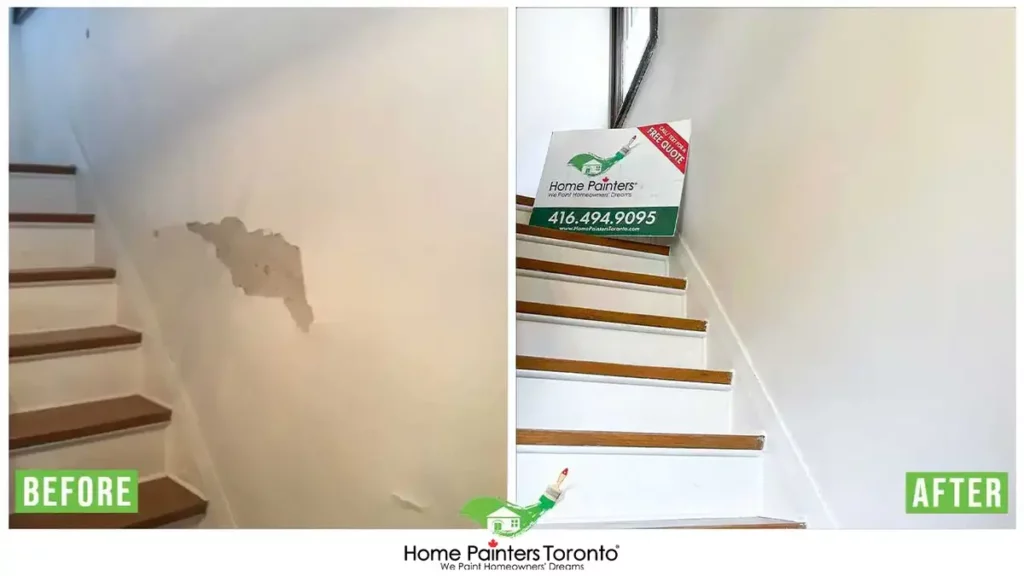
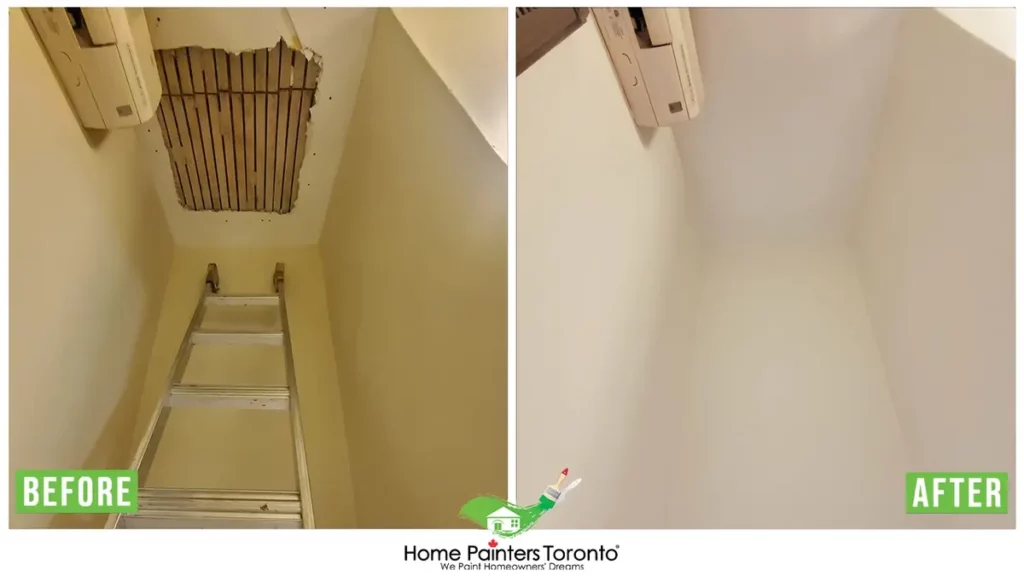
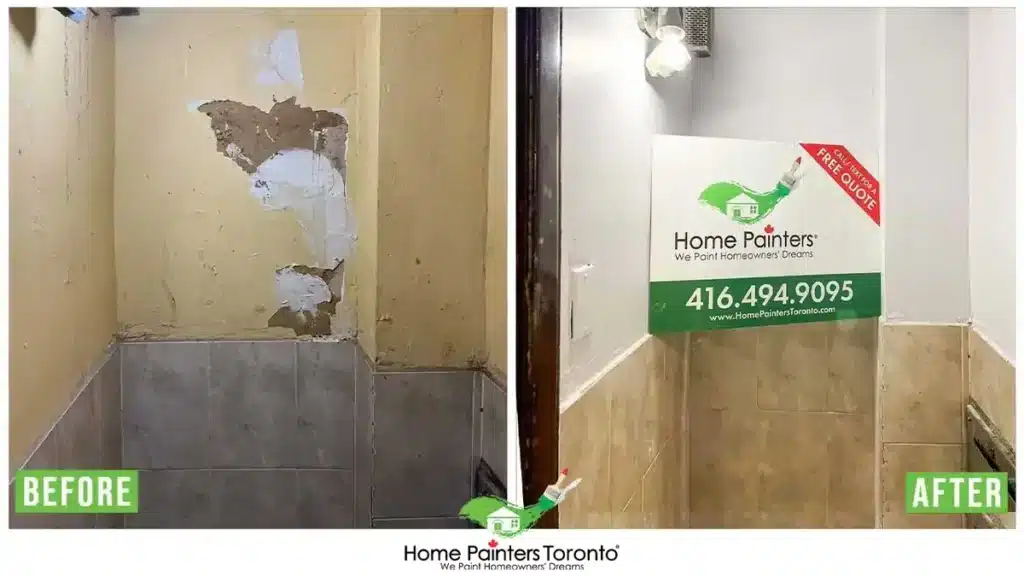
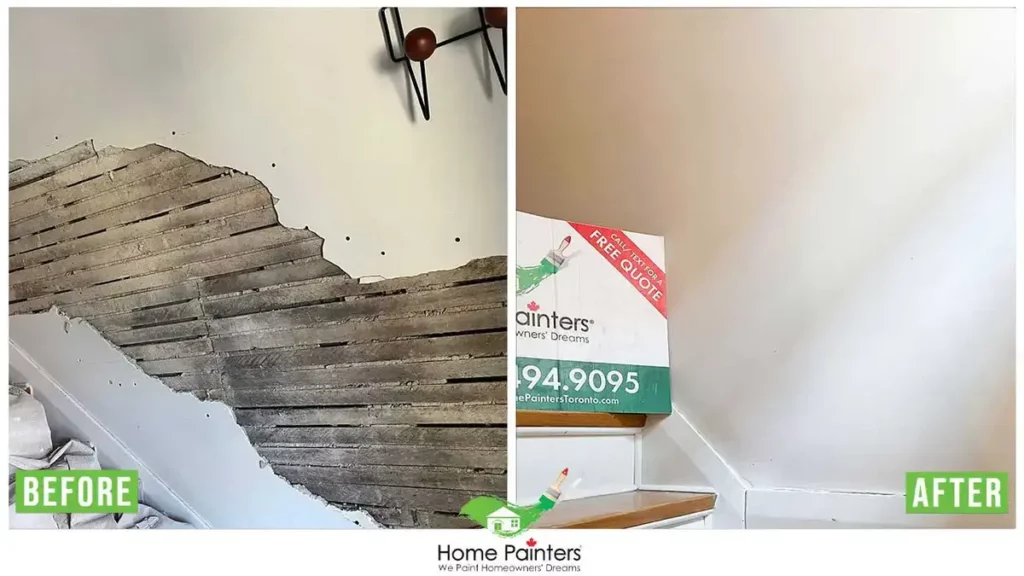
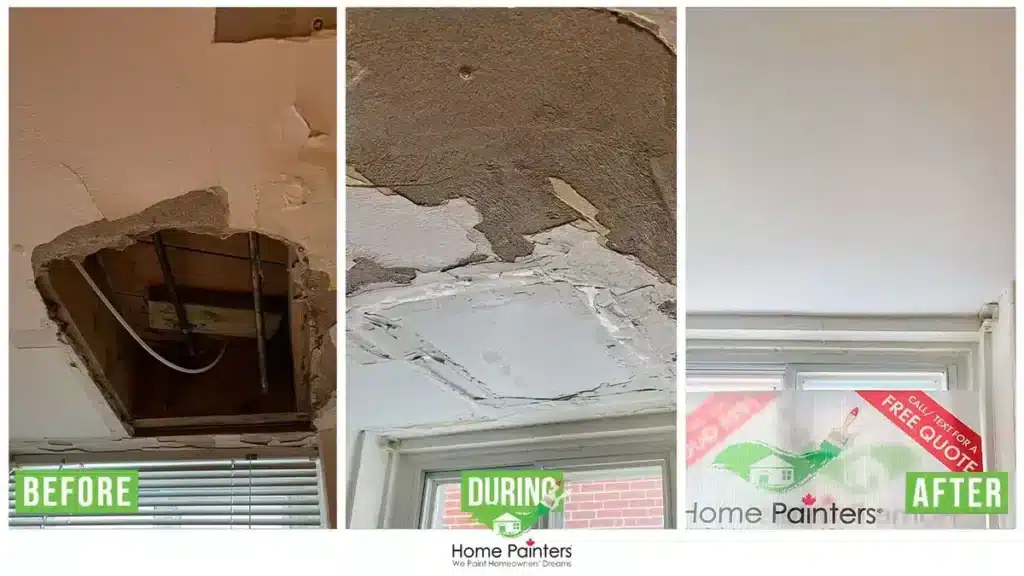
More interesting blogs related to
“Important Things to Know about Fixing Damaged Drywall”
Are you in need of reliable handyman and carpentry services? We can help you! Home Painters Toronto has been the top residential home painting company in greater Toronto and Southern Ontario for over 35 years. Apart from painting, we also offer carpentry, handyman services, and more! Contact us today to learn more or get a FREE estimate online!
Call 416.494.9095 or email [email protected]. Also, don’t forget to check and follow us on our social media channels below!


